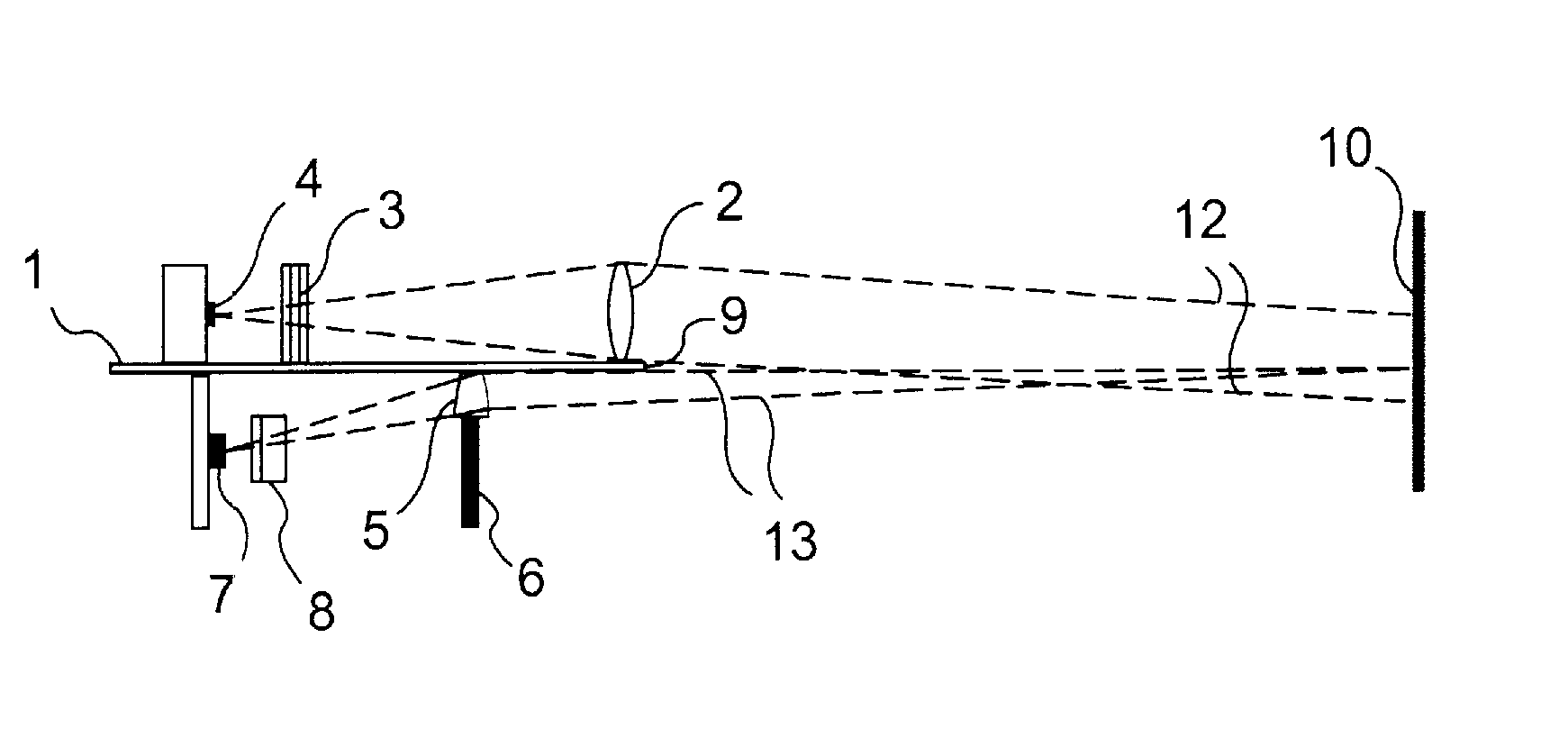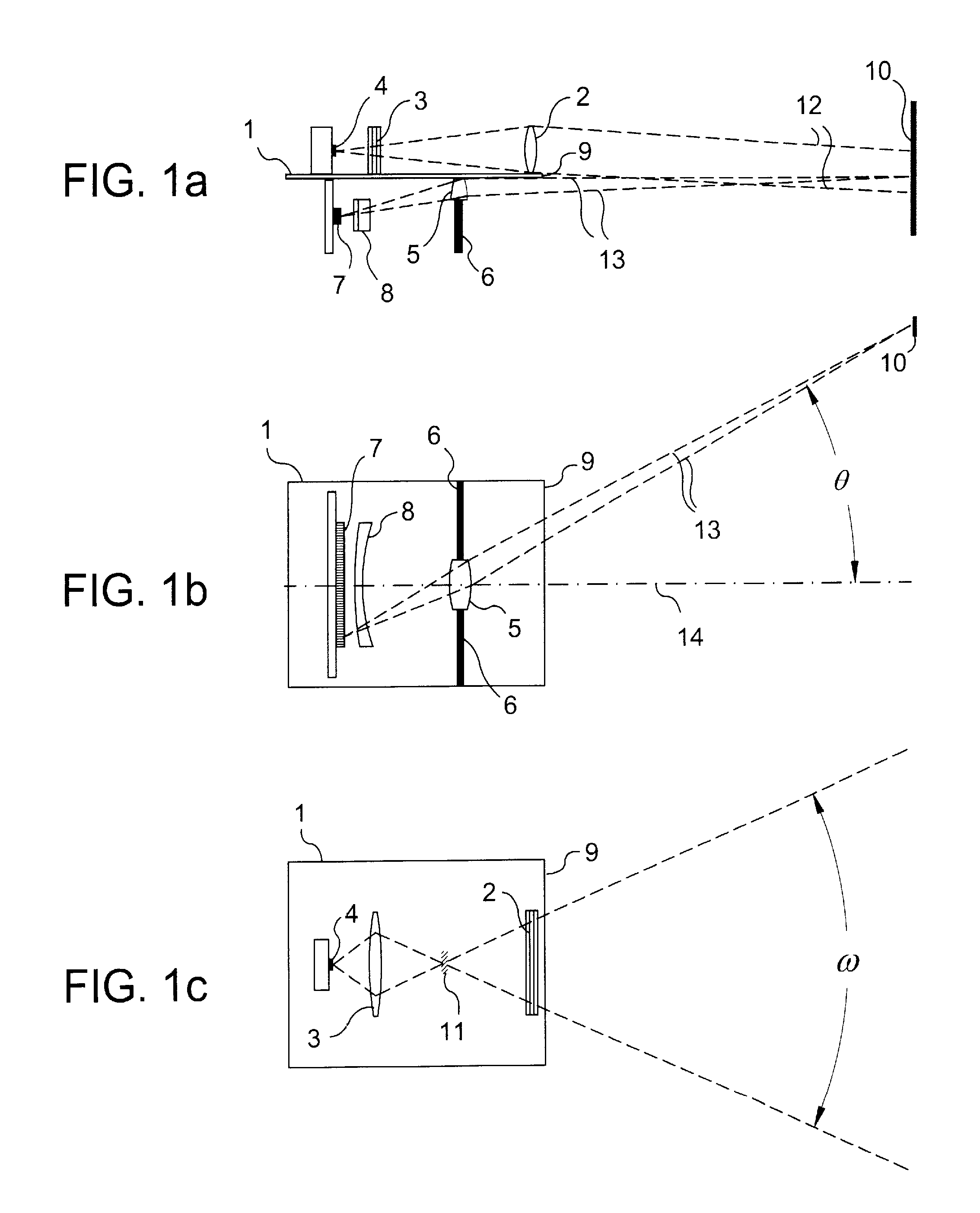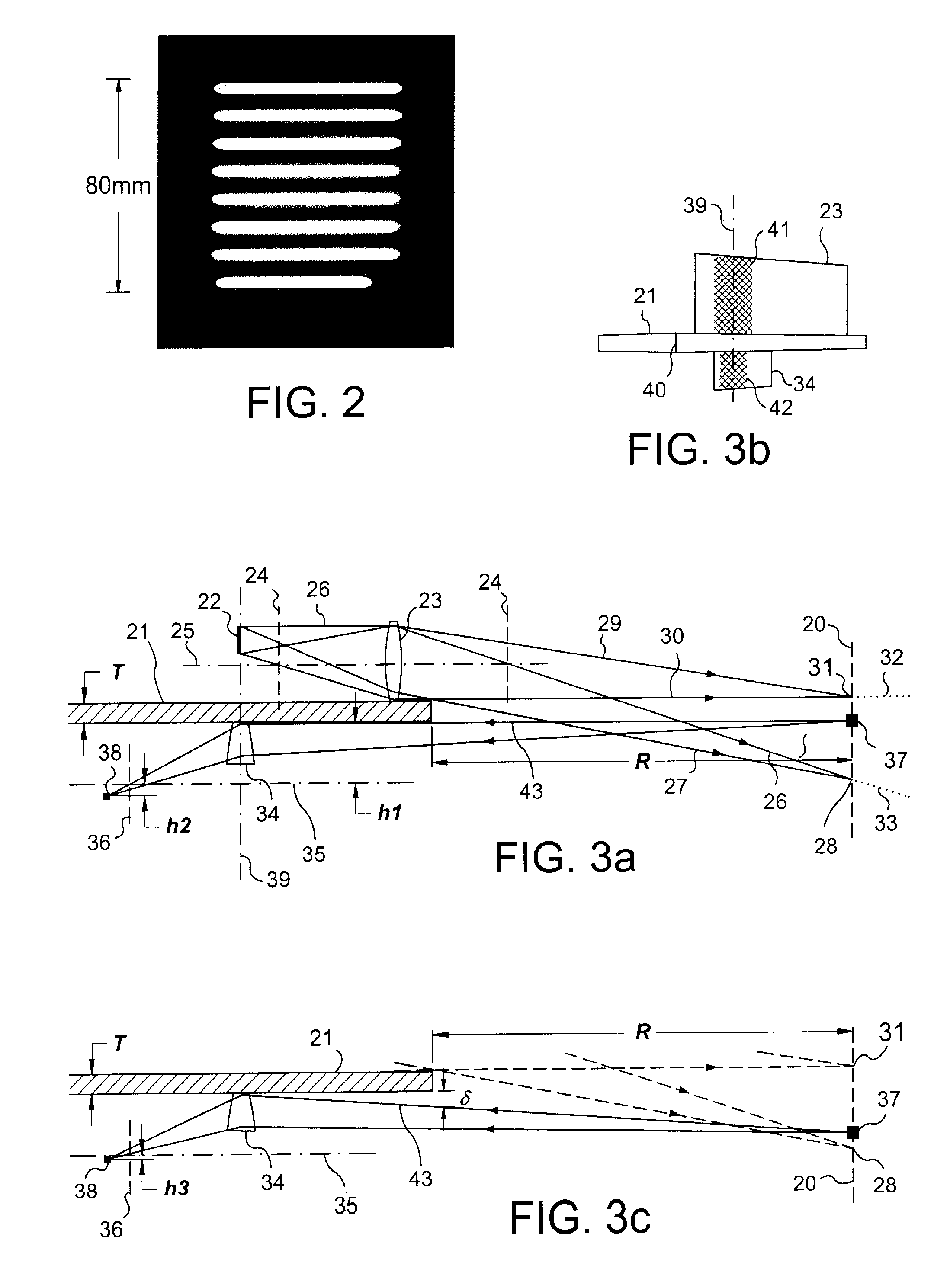Electro-optical sensors
- Summary
- Abstract
- Description
- Claims
- Application Information
AI Technical Summary
Benefits of technology
Problems solved by technology
Method used
Image
Examples
Embodiment Construction
[0042]Referring to FIGS. 1a, 1b and 1c, the electro-optical sensor shown has a substrate 1 that separates a light-emitting assembly from a light-sensing assembly that are mounted on opposite sides of the substrate 1, and provides a light-screen between them. The light-emitting assembly in this case comprises a collimating lens 2, a parallel lens 3 and a light-emitting device in the form of an LED 4, whereas the light-sensing assembly comprises a collector lens 5, an aperture plate 6, a photodiode array 7 and (optionally) a field-curvature correcting lens 8. The lens 5, which has a rectangular rim, is located within the aperture of the plate 6 with one of its edges abutting the substrate 1 and the other three bounded by the aperture plate 6. In this way, the lens 5 provides the entrance pupil of the sensor since all light-rays incident on the photodiode array 7 pass through the lens.
[0043]The substrate 1 is opaque and has thickness T, where Tis very small compared with the operating ...
PUM
 Login to View More
Login to View More Abstract
Description
Claims
Application Information
 Login to View More
Login to View More - R&D
- Intellectual Property
- Life Sciences
- Materials
- Tech Scout
- Unparalleled Data Quality
- Higher Quality Content
- 60% Fewer Hallucinations
Browse by: Latest US Patents, China's latest patents, Technical Efficacy Thesaurus, Application Domain, Technology Topic, Popular Technical Reports.
© 2025 PatSnap. All rights reserved.Legal|Privacy policy|Modern Slavery Act Transparency Statement|Sitemap|About US| Contact US: help@patsnap.com



